{"article":{"id":"2221576","title":"Coastal economic zones become pillars of local development","description":"Many coastal economic zones have truly become pillars and have made great contributions to local economic development such as Nghi Son, Dinh Vu - Cat Hai, Vung Ang, Chu Lai, Dung Quat, Phu Quoc.","contentObject":"
Vietnam has many potentials and strengths in developing the marine economy. The 8th Conference of the Party Central Committee (12th tenure) issued Resolution No. 36-NQ/TW on "Vietnam's sustainable marine economic development strategy to 2030, vision to 2045", determining that by 2030 Vietnam will become a strong marine nation; basically meet the criteria for sustainable marine economic development; form a marine ecological culture; proactively adapt to climate change.
\nAttracting many large projects
\nAccording to Dr. Le Van Hung - Institute for Regional Sustainable Development Studies (Vietnam Academy of Social Sciences), by 2023, Vietnam will have a total of 18 coastal economic zones (EZs) established and built. The coastal EZs are mostly concentrated in the Central coastal region (11 zones), the Northern region has 4 zones and the Southern region has 3 zones (not including Ninh Co EZ, Nam Dinh province, which has been added to the development plan of coastal EZs in Vietnam).
\nMost coastal economic zones have very large planning areas, such as Van Phong Economic Zone with an area of 150,000 hectares, Nghi Son Economic Zone after adjustment is 106,000 hectares, Phu Quoc Economic Zone is nearly 60,000 hectares, Van Don Economic Zone is more than 55,000 hectares.
\nDr. Le Van Hung said that large-scale planning is very important in building a synchronous and comprehensive infrastructure in the long term. It helps coastal economic zones not only be places for production and business, but these areas can become new urban areas, creating a favorable environment for workers and residents.
\nRegarding investment attraction, in the 20 years since its establishment, coastal economic zones have attracted many investment projects in production and business. As of 2021, there were 506 foreign investment projects and 1,648 domestic investment projects attracted to coastal economic zones. Of which, Dinh Vu - Cat Hai coastal economic zone attracted the largest number of investment projects with 205 foreign investment projects and 105 domestic investment projects; Nghi Son economic zone attracted 19 foreign projects and 233 domestic projects; Dung Quat economic zone attracted 49 foreign projects and 195 domestic projects.
\nCoastal economic zones have attracted about 49 billion USD in foreign direct investment and 1,245.5 trillion VND in investment capital from domestic projects.
\n“Thanks to attracting large investment projects, coastal economic zones have quickly become the leading contributors to the budget revenue of provinces/cities. Currently, many coastal economic zones contribute a large part to the budget revenue of provinces such as Dung Quat Economic Zone contributing up to 80% of the total budget revenue of the province, Chu Lai Economic Zone contributing 65%, Nghi Son Economic Zone contributing 61.3%, Vung Ang Economic Zone contributing 56%, Phu Quoc Economic Zone accounting for 43.2%. Creating large jobs for workers.
\nFor disadvantaged provinces, this is an important source of budget to help localities continue to invest in infrastructure to serve socio-economic development. For these localities, coastal economic zones are truly the most important growth pole for industrial development and local budget revenue…”, Dr. Le Van Hung assessed.
\nAccording to this person, coastal economic zones have begun to form a number of industry clusters such as in Chu Lai Economic Zone for automobile production and assembly, in Phu Quoc for tourism, and in Dung Quat and Nghi Son economic zones for oil refinery and petrochemicals.
\nGreat contribution to local economic development
\nDr. Le Van Hung acknowledged that coastal economic zones have initially made positive contributions to the development process of localities, especially the process of promoting industrial development and structural transformation to gradually narrow the development gap between regions.
\nPositive contributions include a number of coastal economic zones that have created a clear change in economic development for provinces and cities in terms of attracting investment capital, contributing to industrial value, export value, paying to the state budget, and improving labor productivity. Many coastal economic zones have truly become pillars and have made great contributions to local economic development such as Nghi Son, Dinh Vu - Cat Hai, Vung Ang, Chu Lai, Dung Quat, and Phu Quoc economic zones.
\nThanks to the establishment and construction of coastal economic zones, socio-economic infrastructure in localities has been gradually invested and completed. Some coastal economic zones have had a clear transformation in terms of connecting traffic, port systems and seaport logistics services, airports, industrial parks, training facilities, and medical services thanks to both investment capital from the budget and mobilization from the domestic and foreign private sector.
\nHowever, according to Dr. Le Van Hung, in addition to positive results, coastal economic zones also reveal some limitations such as not really attracting quality investors, with enough capacity to create branded products and competitiveness in the international market.
\nIn particular, the attracted enterprises have not created a large spillover effect on the development of industrial clusters and supporting industries to create specialization in development. Therefore, the linkage and cooperation between enterprises in the zone, between FDI enterprises and domestic areas, between enterprises in the zone and outside the zone are still very limited...
\nIn addition, large enterprises attracted to coastal economic zones are currently mainly focused on resource-intensive and energy-consuming sectors (such as petrochemicals, steel, thermal power, chemicals, cement, and construction materials), so the risks of negative impacts on the environment are inevitable, especially long-term impacts on the ecological environment.
\nIn addition, the construction process, business activities and management of ecological protection have not been strictly controlled and protected. Many coastal economic zones still lack centralized wastewater treatment areas and hazardous waste and garbage collection areas.
\nTo promote coastal economic zones to truly become the driving forces for local and regional development, Dr. Le Van Hung proposed that Vietnam should conduct research to have key pilot policies to create a development environment for 2 to 3 clusters of coastal economic zones by region. Only then will resources be truly focused on perfecting infrastructure, social services and tools to protect and restore the ecological environment to create truly sustainable coastal economic zones.
\nAt the same time, coastal economic zones need to pilot a number of development models such as green industrial parks and production and business zones that specialize/focus on a specific group of industries/fields.
\nLake Giap
","displayType":1,"options":0,"category":{"name":"Investment","detailUrl":"/business/investment","wikiCategoryDetailUrl":"/ho-so/business/investment","relatedIds":["00000G","00000H","00000K","00000J"],"subIds":["000003","00000G","00000H","00000J","00000K","00000L","00004K"] ,"fullAvatarUrl":"","fullFacebookShareUrl":""},"displayTypeToInt":1,"detailUrl":"/peri-coastal-economic-zone-to-become-the-central-development-zone-of-cac-dia-phuong-2221576.html","fullAvatarUrl":"https://static-images.vnncdn.net/files/publish/2023/12/1/peri-coastal-economic-zone-to-be-the-central-development-zone-of-cac-dia-phuong-770.jpg","fullAvatarFb ... tru-cot-phat-trien-cua-cac-dia-phuong-771.jpg","updatedDate":"2023-12-01T14:14:11","isHiddenDescription":"","publishDateDisplay":"01/12/2023","hasCover":false},"articlesSameCategory":[{"id":"2221077","title":"Marine economy helps Quang Nam and Quang Ngai develop sustainably","description":"Quang Nam and Quang Ngai are promoting the development of marine economy. This is considered the right path, helping the economy of these two provinces develop in the right direction.","displayType":1,"category":{"name":"Head investment","detailUrl":"/kinh-doanh/dau-tu","wikiCategoryDetailUrl":"/ho-so/kinh-doanh/dau-tu","relatedIds":["00000G","00000H","00000K","00000J"],"subIds":["000003","00000G","00000H","00000J","00000K","00000L","00004K"],"fullAvatarUrl":"","fullFacebookShareUrl":""},"displayTypeToInt":1,"detailUrl":"https://vietnamnet.vn/kinh-te-bien-giup-quang-nam-quang-ngai-phat- trien-ben-vung-2221077.html","fullAvatarUrl":"https://static-images.vnncdn.net/files/publish/2023/12/1/kinh-te-bien-giup-quang-nam-quang-ngai-phat-trien-ben-vung-132.jpg","isFee":false,"priority":0,"zoneId":"","publishDate":"2023-12-01T06:32:47","option":0,"avatarIconPosition":0,"updatedDate":"0001-01-01T00:00:00","isPin":false},{"id":"2221318","title":"Economic news November 30: 'Adjusting' credit room; new investors in Bau Duc's company","description":"The State Bank adjusts credit growth targets among banks; Hoang Anh Gia Lai has a new investor; FLC's infamous 2,300 billion VND project in Thanh Hoa is revoked... are the economic news to pay attention to today.","displayType":1,"category":{"name":"Head investment","detailUrl":"/kinh-doanh/dau-tu","wikiCategoryDetailUrl":"/ho-so/kinh-doanh/dau-tu","relatedIds":["00000G","00000H","00000K","00000J"],"subIds":["000003","00000G","00000H","00000J","00000K","00000L","00004K"],"fullAvatarUrl":"","fullFacebookShareUrl":""},"displayTypeToInt":1,"detailUrl":"https://vietnamnet.vn/ban-tin-kinh-te-30-11-noi-room-tin-dung-nha-dau-tu-moi-vao-co ng-ty-bau-duc-2221318.html","fullAvatarUrl":"https://static-images.vnncdn.net/files/publish/2023/11/30/ban-tin- Kinh-te-3011-chinh-room-tin-dung-nha-dau-tu-moi-vao-cong-ty-bau-duc-1356.jpg" ,"isFee":false,"priority":0,"zoneId":"","publishDate":"2023-11-30T19:39:55","option":0,"avatar IconPosition":0,"updatedDate":"0001-01-01T00:00:00","isPin":false},{"id":"2221276","title":"Home "Familiar investors win bid for Quang Tri Airport project worth nearly 6,000 billion","description":"T&T Transport Infrastructure Investment and Development Company Limited and CIENCO4 Group Joint Stock Company are two contractors that have just signed a decision approving the construction of Quang Tri Airport.","displayType":1,"category":{"name":"Investor investment","detailUrl":"/business/investment","wikiCategoryDetailUrl":"/ho-so/business/investment","relatedIds":["00000G","00000H","00000K","00000J"],"subIds":["000003","00000G","00000H","00000J","00000K","00000L","00004K"],"fullAvatarUrl":"","fullFacebookShareUrl":""},"displayTypeToInt":1,"detailUrl":"https://vietnamnet.vn/nha-dau-tu-quen-mat-trung-thau-du-an-san-bay-quang-tri -gan-6-000-ty-2221276.html","fullAvatarUrl":"https://static-images.vnncdn.net/files/publish/2023/11/30/nha-dau-tu-quen-mat-trung-thau-du-an-san-bay-quang-tri-gan-6000-ty-1353.jpg","isF ee":false,"priority":0,"zoneId":"","publishDate":"2023-11-30T19:34:21","option":0,"avatarIco nPosition":0,"updatedDate":"0001-01-01T00:00:00","isPin":false},{"id":"2221196","title":"Increase Green growth is the key to sustainable development","description":"Green growth towards economic prosperity, environmental sustainability and social equity is not only an inevitable choice, but also an opportunity for Vietnam to become a pioneering country in the region.","displayType":1,"category":{"name":"Head investment","detailUrl":"/business/investment","wikiCategoryDetailUrl":"/ho-so/business/investment","relatedIds":["00000G","00000H","00000K","00000J"],"subIds":["000003","00000G","00000H","00000J","00000K","00000L","00004K"],"fullAvatarUrl":"","fullFacebookShareUrl":""},"displayTypeToInt":1,"detailUrl":"https://vietnamnet.vn/tang-truong-xanh-la-chia-khoa-de-phat- trien-ben-vung-2221196.html","fullAvatarUrl":"https://static-images.vnncdn.net/files/publish/2023/11/30/tang-truong-xanh-la-chia-khoa-de-phat-trien-ben-vung-1166.jpg","isFee":fa lse,"priority":0,"zoneId":"","publishDate":"2023-11-30T17:57:25","option":0,"avatarIconP osition":0,"updatedDate":"0001-01-01T00:00:00","isPin":false},{"id":"2221263","title":"Because Why is Khe Sanh wind power negotiating a shareholding structure with a foreign investor?","description":"The Khe Sanh wind power project (Huong Hoa, Quang Tri) is negotiating and planning to restructure shares with a Hong Kong investor to cooperate in management and operation to optimize the efficiency and longevity of the project.","displayType":1,"category":{"name":"Investment investment","detailUrl":"/business/investment","wikiCategoryDetailUrl":"/ho-so/business/investment","relatedIds":["00000G","00000H","00000K","00000J"],"subIds":["000003","00000G","00000H","00000J","00000K","00000L","00004K"],"fullAvatarUrl":"","fullFacebookShareUrl":""},"displayTypeToInt":1,"detailUrl":"https://vietnamnet.vn/vi-sao-dien-gio-khe-sanh-dam-phan-co-cau-co-phan-voi-nha- dau-tu-ngoai-2221263.html","fullAvatarUrl":"https://static-images.vnncdn.net/files/publish/2023/11/30/vi-sao-dien-gio-khe-sanh-dam-phan-co-cau-co-phan-voi-nha-dau-tu-ngoai-1105.jpg","isF ee":false,"priority":0,"zoneId":"","publishDate":"2023-11-30T17:18:20","option":0,"avatarIcon Position":0,"updatedDate":"0001-01-01T00:00:00","isPin":false},{"id":"2221100","title":"Advertisement Ninh firmly holds the top position in attracting FDI","description":"In the first 11 months of 2023, the foreign investment situation in Vietnam continued to be vibrant. Topping the rankings with nearly 3.11 billion USD of registered investment capital, Quang Ninh is a "bright star" and a strong driving force behind the multi-dimensional development of Vietnam's economy.","displayType":1,"category":{"name":"Head investment","detailUrl":"/business/investment","wikiCategoryDetailUrl":"/ho-so/business/investment","relatedIds":["00000G","00000H","00000K","00000J"],"subIds":["000003","00000G","00000H","00000J","00000K","00000L","00004K"],"fullAvatarUrl":"","fullFacebookShareUrl":""},"displayTypeToInt":1,"detailUrl":"https://vietnamnet.vn/quang-ninh-vung-vang-vi-tri-quan-qu an-thu-hut-fdi-2221100.html","fullAvatarUrl":"https://static-images.vnncdn.net/files/publish/2023/11/30/quang-ninh-vung-vang-vi-tri-quan-quan-thu-hut-fdi-697.jpeg","isFee":fal se,"priority":0,"zoneId":"","publishDate":"2023-11-30T11:39:00","option":4,"avatarIconPo site":0,"updatedDate":"0001-01-01T00:00:00","isPin":false},{"id":"2220962","title":"Reason because a wind power project wants to transfer shares to a Hong Kong partner","description":"The Khe Sanh wind power project (Huong Hoa, Quang Tri) is negotiating and planning to transfer part of its shares to a Hong Kong (China) investor to cooperate in management and operation to optimize the efficiency and longevity of the project.","displayType":1,"category":{"name":"Investment investment","detailUrl":"/business/investment","wikiCategoryDetailUrl":"/ho-so/business/investment","relatedIds":["00000G","00000H","00000K","00000J"],"subIds":["000003","00000G","00000H","00000J","00000K","00000L","00004K"],"fullAvatarUrl":"","fullFacebookShareUrl":""},"displayTypeToInt":1,"detailUrl":"https://vietnamnet.vn/ly-do-mot-du-an-dien-gio-muon-nhuong-co-phan-cho-d oi-tac-hong-kong-2220962.html","fullAvatarUrl":"https://static-images.vnncdn.net/files/publish/2023/11/30/ly-do-du-an-dien-gio-muon-nhuong-co-phan-cho-doi-tac-hong-kong-304.jpg","isFee":false,"priority":0,"zoneId":"","publishDate":"2023-11-30T09:00:00","option":0,"avatarIconPosition":0,"updatedDate":"0001-01-01T00:00:00","isPin":false},{"id":"2220854","title":"Economic news November 29: Applying global minimum tax; VAT reduction until June 30, 2024","description":"Vietnam officially applies global minimum tax from January 1, 2024; National Assembly agrees to reduce VAT by 2% until mid-2024; National Assembly Chairman gives reasons for not yet passing the Land Law; Consumer Price Index in November increases... are notable economic news of the day.","displayType":1,"category":{"name":"Head investment","detailUrl":"/kinh-doanh/dau-tu","wikiCategoryDetailUrl":"/ho-so/kinh-doanh/dau-tu","relatedIds":["00000G","00000H","00000K","00000J"],"subIds":["000003","00000G","00000H","00000J","00000K","00000L","00004K"],"fullAvatarUrl":"","fullFacebookShareUrl":""},"displayTypeToInt":1,"detailUrl":"https://vietnamnet.vn/ban-tin-kinh-te-29-11-ap-thue-toi-thieu-toan-cau-giam-thue-vat -toi-30-6-2024-2220854.html","fullAvatarUrl":"https://static-images.vnncdn.net/files/publish/2 023/11/29/ban-tin- Kinh-te-2911-ap-thue-toi-thieu-toan-cau-giam-thue-vat-toi-3062024-1331.jpg"," isFee":false,"priority":0,"zoneId":"","publishDate":"2023-11-29T19:40:48","option":0,"avatarIc onPosition":0,"updatedDate":"0001-01-01T00:00:00","isPin":false},{"id":"2220566","title":"Success "establishment of Vietnam Rice Industry Association","description":"The Ministry of Home Affairs has just decided to allow the establishment of Vietnam Rice Industry Association.","displayType":1,"category":{"name":"First investment","detailUrl":"/business/investment","wikiCategoryDetailUrl":"/ho-so/business/investment","relatedIds":["00000G","00000H","00000K","00000J"],"subIds":["000003","00000G","00000H","00000J","00000K","00000L","00004K"],"fullAvatarUrl":"","fullFacebookShareUrl":""},"displayTypeToInt":1,"detailUrl":"https://vietnamnet.vn/thanh-lap-hiep-hoi-nganh-hang-lua -gao-viet-nam-2220566.html","fullAvatarUrl":"https://static-images.vnncdn.net/files/publish/2023/11/29/thanh-lap-hiep-hoi-nganh-hang-lua-gao-viet-nam-448.jpg","isFee":false," priority":0,"zoneId":"","publishDate":"2023-11-29T09:53:13","option":0,"avatarIconPosition":0,"updatedDate":"0001-01-01T00:00:00","isPin":false},{"id":"2221025","title":"Advertisement Quang Ninh supports businesses to "go out to sea" through e-commerce","description":"Quang Ninh province has actively organized many training programs, conferences, and seminars to share mechanisms and policies for developing border trade economy... supporting businesses with skills and knowledge to participate in cross-border e-commerce activities.","displayType":1,"category":{"name":"Head investment","detailUrl":"/business/investment","wikiCategoryDetailUrl":"/ho-so/business/investment","relatedIds":["00000G","00000H","00000K","00000J"],"subIds":["000003","00000G","00000H","00000J","00000K","00000L","00004K"],"fullAvatarUrl":"","fullFacebookShareUrl":""},"displayTypeToInt":1,"detailUrl":"https://vietnamnet.vn/quang-ninh-ho-tro-doanh-nghiep-ra-bien-lon-qua-thuon g-mai-dien-tu-2221025.html","fullAvatarUrl":"https://static-images.vnncdn.net/files/publish/2023/11/30/quang-ninh-ho-tro-doanh-nghiep-ra-bien-lon-qua-thuong-mai-dien-tu-411.jpg","isFee ":false,"priority":0,"zoneId":"","publishDate":"2023-11-29T09:34:00","option":4,"avatarIconP osition":0,"updatedDate":"0001-01-01T00:00:00","isPin":false},{"id":"2220450","title":"These impressive figures in Vietnam - Japan economic cooperation","description":"On September 21, 1973, Vietnam and Japan established diplomatic relations in a signing ceremony in Paris, France. Over the past 50 years, the two countries have become important economic partners of each other. Of which, Japan provides the largest loan capital to Vietnam.","displayType":8,"category":{"name":"Head investment","detailUrl":"/business/investment","wikiCategoryDetailUrl":"/ho-so/business/investment","relatedIds":["00000G","00000H","00000K","00000J"],"subIds":["000003","00000G","00000H","00000J","00000K","00000L","00004K" ],"fullAvatarUrl":"","fullFacebookShareUrl":""},"displayTypeToInt":8,"detailUrl":"https://vietnamnet.vn/nhung-con-so-an-tuong-trong-hop-tac-kinh-te-viet-nam-nhat-ban-2220450.html","fullAvatarUrl":"https://static-images.vnncdn.net/files/publish/2023/11/28/quan-he-kinh-te-viet-nam-nhat-ban-nhung-dau-moc-tren-chang-duong-lich-su-1475.png","isFee":false,"priority":0,"zoneId":"","publishDate":"2023-11-29T06:15:00","option":65 536,"avatarIconUrl":"https://static-images.vnncdn.net/files/2023/4/8/infographic.svg","avatarIconPosition":5,"updatedDate":"0001-01-01T00:00:00","isPin":false,"avatarIconId":"00000R"},{"id":"2220301","title":"Central provinces urgently remove IUU 'yellow card'","description":"Vietnam's 'yellow card' warning for exploited seafood products has caused a lot of economic damage. To remove the IUU 'yellow card', many Central provinces have taken urgent solutions.","displayType":1,"category":{"name":"Head investment","detailUrl":"/business/investment","wikiCategoryDetailUrl":"/ho-so/business/investment","relatedIds":["00000G","00000H","00000K","00000J"],"subIds":["000003","00000G","00000H","00000J","00000K","00000L","00004K"],"fullAvatarUrl":"","fullFacebookShareUrl":""},"displayTypeToInt":1,"detailUrl":"https://vietnamnet.vn/cac-tinh-mien-trung-rao-riet-go -the-vang-iuu-2220301.html","fullAvatarUrl":"https://static-images.vnncdn.net/files/publish/2023/11/28/cac-tinh-mien-trung-rao-riet-go-the-vang-iuu-1356.jpg","isFee":false,"priority":0,"zoneId":"","publishDate":"2023-11-28T20:09:00","option":0,"avatarIconPosition":0,"updatedDate":"0001-01-01T00:00:00","isPin":false},{"id":"2220427","title":"Economic news November 28: Maximum deposit 5% of selling price; Real estate: Record low Tet bonus","description":"Real estate project investors are only allowed to collect deposits of no more than 5% of the selling price; real estate businesses give unprecedentedly low Tet bonuses; foreign investment attraction increases... are the economic news to pay attention to today.","displayType":1,"category":{"name":"Head investment","detailUrl":"/kinh-doanh/dau-tu","wikiCategoryDetailUrl":"/ho-so/kinh-doanh/dau-tu","relatedIds":["00000G","00000H","00000K","00000J"],"subIds":["000003","00000G","00000H","00000J","00000K","00000L","00004K"],"fullAvatarUrl":"","fullFacebookShareUrl":""},"displayTypeToInt":1,"detailUrl":"https://vietnamnet.vn/ban-tin-kinh-te-28-11-tien-coc-toi-da-5-gia-ban-bds-thuong-t et-thap-ky-luc-2220427.html","fullAvatarUrl":"https://static-images.vnncdn.net/files/publish/2023/11/28/ban-tin- Kinh-te-2811-tien-coc-toi-da-5-gia-ban-bds-thuong-tet-thap-ky-luc-1299.jpg", "isFee":false,"priority":0,"zoneId":"","publishDate":"2023-11-28T19:22:30","option":0,"avatarI conPosition":0,"updatedDate":"0001-01-01T00:00:00","isPin":false},{"id":"2220365","title":"Male Nam Dinh's gross domestic product (GRDP) in 2023 is expected to increase by 10.19% compared to 2022, which is also the first time the province's GRDP has achieved double-digit growth. ","displayType":1,"category":{"name":"Kinh doanh","detailUrl":"/kinh-doanh","wikiCategoryDetailUrl":"/ho-so/kinh-doanh","relatedIds":["00000G","00000H","00000K","00000J"],"subIds":["000003","00000G","00000H","00000J","00000K","00000L","00004K"],"fullAvatarUrl":"","fullFacebookShareUrl":""},"displayTypeToInt":1,"detailUrl":"https://vietnamnet.vn/nam-dinh-dat-muc-tang-truong -lich-su-2220365.html","fullAvatarUrl":"https://static-images.vnncdn.net/files/publish/2023/11/28/nam-dinh-dat-muc-tang-truong-lich-su-1195.jpeg","isFee":false,"prior ity":0,"zoneId":"","publishDate":"2023-11-28T17:59:00","option":0,"avatarIconPositi on":0,"updatedDate":"0001-01-01T00:00:00","isPin":false},{"id":"2220367","title":"11 month, foreign investment attraction increased by nearly 15%","description":"According to the Ministry of Planning and Investment, foreign direct investment (FDI) attraction in 11 months reached nearly 29 billion USD, an increase of nearly 15% over the same period last year.","displayType":1,"category":{"name":"Investment investment","detailUrl":"/business/investment","wikiCategoryDetailUrl":"/ho-so/business/investment","relatedIds":["00000G","00000H","00000K","00000J"],"subIds":["000003","00000G","00000H","00000J","00000K","00000L","00004K"],"fullAvatarUrl":"","fullFacebookShareUrl":""},"displayTypeToInt":1,"detailUrl":"https://vietnamnet.vn/11-thang-thu-hut-von-dau-tu-nuoc-ngoai -tang-gan-15-2220367.html","fullAvatarUrl":"https://static-images.vnncdn.net/files/publish/2023/11/28/11-tang-thu-hut-von-dau-tu-nuoc-ngoai-tang-gan-15-1167.jpg","isFee":false ,"priority":0,"zoneId":"","publishDate":"2023-11-28T17:51:00","option":0,"avatarIconPosi tion":0,"updatedDate":"0001-01-01T00:00:00","isPin":false},{"id":"2220292","title":"Source Special force to develop socio-economic infrastructure in mountainous and island areas of Quang Ninh","description":"To improve people's quality of life and narrow regional disparities, in 2023, Quang Ninh will implement 101 essential infrastructure investment projects supported by the provincial budget for socio-economic development in rural and mountainous areas.","displayType":1,"category":{"name":"Investment investment","detailUrl":"/business/investment","wikiCategoryDetailUrl":"/ho-so/business/investment","relatedIds":["00000G","00000H","00000K","00000J"],"subIds":["000003","00000G","00000H","00000J","00000K","00000L","00004K"],"fullAvatarUrl":"","fullFacebookShareUrl":""},"displayTypeToInt":1,"detailUrl":"https://vietnamnet.vn/nguon-luc-dac-biet-phat-trien-ha-tang-kinh-te-xa-hoi-mien-nui-hai-d ao-quang-ninh-2220292.html","fullAvatarUrl":"https://static-images.vnncdn.net/files/publish/2023/11/28/nguon-luc-dac-biet-phat-trien-ha-tang- Kinh-te-xa-hoi-mien-nui-hai-dao-quang-ninh-811.jpe g","isFee":false,"priority":0,"zoneId":"","publishDate":"2023-11-28T14:30:00","option":4,"avatar IconPosition":0,"updatedDate":"0001-01-01T00:00:00","isPin":false},{"id":"2220375","title":"Increase Quang Ninh's GRDP growth is estimated at 11.03%, leading the Red River Delta region","description":"According to data from the Provincial Statistics Office, in 2023, Quang Ninh will complete and exceed 12/12 socio-economic targets; maintain a stable double-digit growth momentum for 9 consecutive years (2015 - 2023); GRDP is estimated at 11.03%, leading the Red River Delta region.","displayType":1,"category":{"name":"Head investment","detailUrl":"/business/investment","wikiCategoryDetailUrl":"/ho-so/business/investment","relatedIds":["00000G","00000H","00000K","00000J"],"subIds":["000003","00000G","00000H","00000J","00000K","00000L","00004K"],"fullAvatarUrl":"","fullFacebookShareUrl":""},"displayTypeToInt":1,"detailUrl":"https://vietnamnet.vn/tang-truong-grdp-quang-ninh-uoc-dat-11-03-dung-dau-khu-vuc-dong-b ang-song-hong-2220375.html","fullAvatarUrl":"https://static-images.vnncdn.net/files/publish/2023/11/28/tang-truong-grdp-quang-ninh-uoc-dat-1103-dung-dau-khu-vuc-dong-bang-song-hong-1072.jpg" ,"isFee":false,"priority":0,"zoneId":"","publishDate":"2023-11-28T14:30:00","option":4,"avatarI conPosition":0,"updatedDate":"0001-01-01T00:00:00","isPin":false},{"id":"2220125","title":"On 1 million farming households in the West participate in growing high-quality rice","description":"Deputy Prime Minister Tran Luu Quang has just signed a decision approving the Project "Sustainable development of 1 million hectares of high-quality and low-emission rice cultivation associated with green growth in the Mekong Delta by 2030".","displayType":1,"category":{"name":"Head investment","detailUrl":"/business/investment","wikiCategoryDetailUrl":"/ho-so/business/investment","relatedIds":["00000G","00000H","00000K","00000J"],"subIds":["000003","00000G","00000H","00000J","00000K","00000L","00004K"],"fullAvatarUrl":"","fullFacebookShareUrl":""},"displayTypeToInt":1,"detailUrl":"https://vietnamnet.vn/tren-1-trieu-ho-nong-dan-mien-tay-tham-gia-trong-lua- chat-luong-cao-2220125.html","fullAvatarUrl":"https://static-images.vnncdn.net/files/publish/2023/11/28/tren-1-trieu-ho-nong-dan-mien-tay-tham-gia-trong-lua-chat-luong-cao-537.jpg","isFee":false,"priority":0,"zoneId":"","publishDate":"2023-11-28T11:08:00","option":0,"avatarIconPosition":0,"updatedDate":"0001-01-01T00:00:00","isPin":false},{"id":"2219934","title":"Economic news November 27: People's money deposited in banks hits record high; Bond interest rates increase","description":"People's deposits in banks set a record; government bond interest rates increased at all terms; the Prime Minister requested the State Bank to learn from experience in managing credit growth; mini apartments were granted pink books... are the economic news to pay attention to today.","displayType":1,"category":{"name":"Head investment","detailUrl":"/business/investment","wikiCategoryDetailUrl":"/ho-so/business/investment","relatedIds":["00000G","00000H","00000K","00000J"],"subIds":["000003","00000G","00000H","00000J","00000K","00000L","00004K"],"fullAvatarUrl":"","fullFacebookShareUrl":""},"displayTypeToInt":1,"detailUrl":"https://vietnamnet.vn/ban-tin-kinh-te-27-11-tien-dan-gui- ngan-hang-ky-luc-lai-suat-trai-phieu-tang-2219934.html","fullAvatarUrl":"https://static-images.vnncdn.net/files/publish/2023/11/27/lai-suat-ngan-hang-1-1319.jpeg","isFee":fals e,"priority":0,"zoneId":"","publishDate":"2023-11-27T19:23:25","option":0,"avatarIconPo site":0,"updatedDate":"0001-01-01T00:00:00","isPin":false},{"id":"2219813","title":"Set Construction expressed its views on the North-South railway project with an investment of more than 70 billion USD","description":"Construction Minister Nguyen Thanh Nghi agreed on the plan to build the North-South high-speed railway according to scenario 3, double track, 1,435mm gauge, design speed of 350 km/h, investment capital of more than 70 billion USD.","displayType":1,"category":{"name":"Kinh doanh","detailUrl":"/kinh-doanh","wikiCategoryDetailUrl":"/ho-so/kinh-doanh","relatedIds":["00000G","00000H","00000K","00000J"],"subIds":["000003","00000G","00000H","00000J","00000K","00000L","00004K"],"fullAvatarUrl":"","fullFacebookShareUrl":""},"displayTypeToInt":1,"detailUrl":"https://vietnamnet.vn/bo-xay-dung-dong-y-duong-sat-bac-nam-toc-do-350km-h-von-dau-tu-hon-7 0-ty-usd-2219813.html","fullAvatarUrl":"https://static-images.vnncdn.net/files/publish/2023/11/28/bo-xay-dung-neu-quan-diem-ve-du-an-duong-sat-bac-nam-dau-tu-hon-70-ty-usd-132.jpg","isFe e":false,"priority":0,"zoneId":"","publishDate":"2023-11-27T17:41:00","option":0,"avatarIconP osition":0,"updatedDate":"0001-01-01T00:00:00","isPin":false},{"id":"2190964","title":"Transfer Energy translation: The inevitable journey associated with storage technology","description":"Renewable energy is becoming the hope for achieving the goal of greenhouse gas neutrality by 2050.","displayType":1,"category":{"name":"Head investment","detailUrl":"/business/investment","wikiCategoryDetailUrl":"/ho-so/business/investment","relatedIds":["00000G","00000H","00000K","00000J"],"subIds":["000003","00000G","00000H","00000J","00000K","00000L","00004K"],"fullAvatarUrl":"","fullFacebookShareUrl":""},"displayTypeToInt":1,"detailUrl":"https://vietnamnet.vn/chuyen-dich-nang-luong-hanh -trinh-tat-love-gan-voi-cong-listen-luu-tru-2190964.html","fullAvatarUrl":"https://static-images.vnncdn.net/files/publish/2023/11/27/dien-mat-troi-576.jpg","isFee":false,"pri ority":0,"zoneId":"","publishDate":"2023-11-27T11:13:21","option":0,"avatarIconPositi on":0,"updatedDate":"0001-01-01T00:00:00","isPin":false},{"id":"2191568","title":"Increase "Labor productivity to improve competitiveness","description":"Improving labor productivity and TFP (or increasing quality) is a driving force for growth, one of the sustainable development goals set by the Government.","displayType":1,"category":{"name":"Investment investment","detailUrl":"/business/investment","wikiCategoryDetailUrl":"/ho-so/business/investment","relatedIds":["00000G","00000H","00000K","00000J"],"subIds":["000003","00000G","00000H","00000J","00000K","00000L","00004K"],"fullAvatarUrl":"","fullFacebookShareUrl":""},"displayTypeToInt":1,"detailUrl":"https://vietnamnet.vn/tang-nang-suat-lao-dong-de-nang-cao-nang- luc-canh-tranh-2191568.html","fullAvatarUrl":"https://static-images.vnncdn.net/files/publish/2023/11/27/tang-nang-suat-lao-dong-de-nang-cao-nang-luc-canh-tranh-573.jpg","isFee":f alse,"priority":0,"zoneId":"","publishDate":"2023-11-27T11:12:24","option":0,"avatarIconP osition":0,"updatedDate":"0001-01-01T00:00:00","isPin":false},{"id":"2219484","title":"One The company announced the highest Tet bonus of 200% of salary","description":"Despite difficulties in orders, the company still offers the highest Lunar New Year bonus of 200% of basic salary and work salary.","displayType":1,"category":{"name":"First investment","detailUrl":"/business/investment","wikiCategoryDetailUrl":"/ho-so/business/investment","relatedIds":["00000G","00000H","00000K","00000J"],"subIds":["000003","00000G","00000H","00000J","00000K","00000L","00004K"],"fullAvatarUrl":"","fullFacebookShareUrl":""},"displayTypeToInt":1,"detailUrl":"https://vietnamnet.vn/mot-doanh-nghiep-cong-bo-muc-thuong-tet-cao-n hat-200-luong-2219484.html","fullAvatarUrl":"https://static-images.vnncdn.net/files/publish/2023/11/27/mot-doanh-nghiep-cong-bo-muc-thuong-tet-cao-nhat-200-luong-652.jpeg","isFee": false,"priority":0,"zoneId":"","publishDate":"2023-11-27T06:11:00","option":0,"avatarIconP osition":0,"updatedDate":"0001-01-01T00:00:00","isPin":false},{"id":"2219494","title":"'Prime Bac Ninh's industrial government estimates negative growth, rare after ten years","description":"Regularly ranked among the top localities with the highest growth rates in the country, but in 2023 the gross product growth of the province (GRDP) considered the "industrial capital" in the North will be negative.","displayType":1,"category":{"name":"Top private","detailUrl":"/business-doanh/dau-tu","wikiCategoryDetailUrl":"/ho-so/business-business/dau-tu","re latedIds":["00000G","00000H","00000K","00000J"],"subIds":["000003","00000G","00000H","00000 J","00000K","00000L","00004K"],"fullAvatarUrl":"","fullFacebookShareUrl":""},"displayTypeToInt":1,"detailUrl":"https://vietnamnet.vn/thu-phu-cong-nghiep-bac-ninh-uoc-tinh-tang-truong- AM-2219494.HTML "," Fullavatarurl ":" https://static-images.vnncdn.net/files/publish/2023/11/26/thu-phu-cong-nghiep-bac-ninh-uoc-tinh-tang-truong-am-hiem-thay-sau-chuc-nam-1182.jpg "," Isfefe E ": False," Priority ": 0," Zoneid ":" "," Publishdate ":" 2023-11-27T06: 00: 00 "," Option ": 0," AvataricooCOico Nposition ": 0," UpdatedDate ":" 0001-01-01T00: 00: 00 "," ISPIN ": False}, {" ID ":" 2219458 "," Title ":" Version Economic news 11/26: Car imports increase, Vinaconex subsidiary fined","description":"The number of foreign cars imported to Vietnam for Tet has unexpectedly increased sharply; Vinaconex subsidiary fined and collected nearly 2 billion VND in tax; shrimp prices increase sharply again... are the economic news to pay attention to today.","displayType":1,"category":{"name":"Head private","detailUrl":"/business-doanh/dau-tu","wikiCategoryDetailUrl":"/ho-so/business-business/dau-tu","relate dIds":["00000G","00000H","00000K","00000J"],"subIds":["000003","00000G","00000H","00000J","0000 0K","00000L","00004K"],"fullAvatarUrl":"","fullFacebookShareUrl":""},"displayTypeToInt":1,"detailUrl":"https://vietnamnet.vn/ban-tin-lanh-te-26-11-nhap-khau-o-to-tang-cong-ty-con-vinaconex-b I-phat-2219458.html "," FullAVatarurl ":" https://static-images.vnncdn.net/files/publish/2023/11/26/ban-tin-kinh-te-2611-nhap-khau-o-to-tang-cong-ty-con-vinaconex-bi-phat-819.jpg "," iSFee " "Priority": 0, "Zoneid": "", "Publishdate": "2023-11-26t19: 21: 00", "Option": 0, "Avatariconposition": 0, 0, "UpdatedDate": "0001-01-01T00: 00: 00", "ISPIN": False}], "Pageindex": 0, "Totalpage": 0, "Articlepage": 0}Many coastal economic zones actually form pillars and make great contributions to local economic development such as Nghi Son, Dinh Vu - Cat Hai, Vung Ang, Chu Lai, Dung Quat, Phu Quoc.
Vietnam has many potentials and strengths in marine economic development. The 8th Conference of the Party Central Committee (term XII) issued Resolution No. 36-NQ/TW on "Strategy for sustainable development of Vietnam's marine economy to 2030, vision to 2045", determining that by 2030 Vietnam will become a strong maritime nation; basically achieving the criteria for sustainable development of the marine economy; forming a marine ecological culture; proactively adapt to climate change.
Attracting many large projects
According to Dr. Le Van Hung - Institute for Regional Sustainable Development Research (Vietnam Academy of Social Sciences) By 2023, Vietnam will have a total of 18 coastal economic zones (EZs) established and built. Coastal economic zones are mostly concentrated in the Central Coast region (11 zones), the Northern region has 4 zones and the Southern region has 3 zones (not to mention Ninh Co Economic Zone, Nam Dinh province, which has been added to the development planning of Vietnam's coastal economic zones).
Most coastal economic zones have very large planned areas, such as Van Phong economic zone with an area of 150,000 hectares, Nghi Son economic zone after adjustment is 106,000 hectares, Phu Quoc economic zone is nearly 60,000 hectares, and Van Don economic zone is more than 55,000 hectares.
Dr. Le Van Hung said that planning a large area is very important in building infrastructure synchronously and comprehensively in the long term. Helping coastal economic zones not simply be places to serve production and business, but these areas can become new urban areas creating a favorable environment for workers and residents.
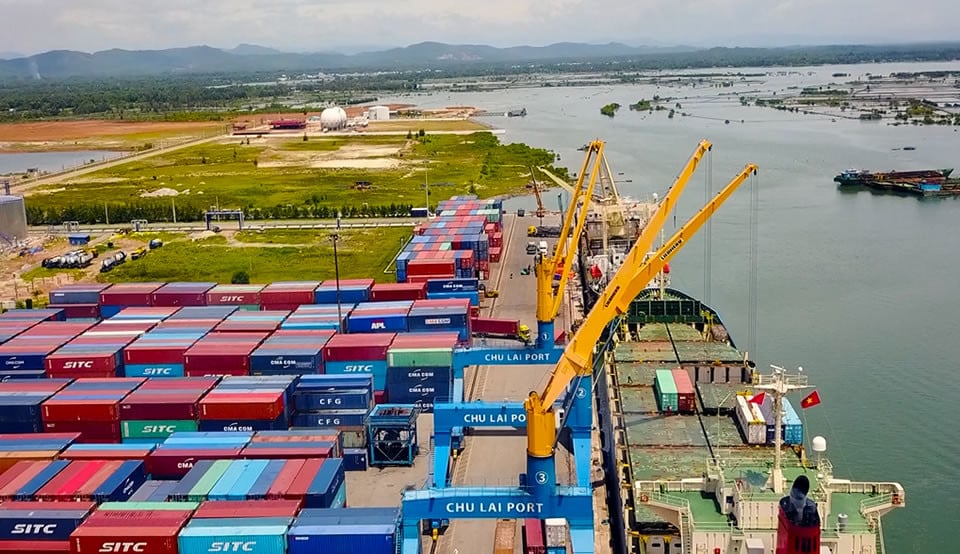
Regarding attracting investment capital, in about 20 years since their establishment, coastal economic zones have attracted many investment projects in production and business. As of 2021, there have been 506 foreign investment projects and 1,648 domestic investment projects attracted to coastal economic zones. Among them, Dinh Vu - Cat Hai coastal economic zone attracted the largest number of investment projects with 205 foreign investment projects, 105 domestic investment projects; Nghi Son Economic Zone attracts 19 foreign projects and 233 domestic projects; Dung Quat Economic Zone attracts 49 foreign projects and 195 domestic projects.
Coastal economic zones have attracted about 49 billion USD of foreign direct investment capital, 1,245.5 trillion VND of investment capital from domestic projects.
"Thanks to attracting large investment projects, coastal economic zones quickly became the leaders in contributing to the budget revenue of provinces/cities. Currently, many coastal economic zones contribute largely to the budget revenue of provinces such as Dung Quat economic zone contributing up to 80% of the province's total budget revenue, Chu Lai economic zone contributing 65%, Nghi Son economic zone contributing 61.3%, Vung Ang economic zone contributing 56%, Phu Quoc Economic Zone accounts for 43.2%. Creating large jobs for workers.
For disadvantaged provinces, this is an important budget source to help localities continue to invest in infrastructure to serve socio-economic development. For these localities, the coastal economic zone is truly the most important growth pole for industrial development and local budget revenue...", assessed Dr. Le Van Hung.
According to this position, coastal economic zones have begun to form a number of industry linkage clusters such as in Chu Lai economic zone for automobile production and assembly, for tourism in Phu Quoc, and petrochemical clusters in Dung Quat and Nghi Son economic zones...
Great contribution to local economic development
Dr. Le Van Hung acknowledged that coastal economic zones have initially made positive contributions to the development process for localities, especially the process of promoting industrial development and structural transformation to gradually narrow the development gap between regions.
Positive contributions include a number of coastal economic zones that have created clear changes in economic development for provinces and cities in terms of attracting investment capital, contributing to industrial value, export value, paying to the state budget, and improving worker productivity. Many coastal economic zones actually form a pillar and make great contributions to local economic development such as Nghi Son, Dinh Vu - Cat Hai, Vung Ang, Chu Lai, Dung Quat, and Phu Quoc economic zones.

Thanks to the formation and construction of coastal economic zones, socio-economic infrastructure in localities is gradually being invested and completed. Some coastal economic zones have had a clear transformation in terms of traffic connections, port systems and seaport logistics services, airports, industrial parks, training facilities, and medical services thanks to both investment capital from the budget and mobilization from the domestic and foreign private sectors.
However, according to Dr. Le Van Hung Besides positive results, coastal economic zones also reveal some limitations such as not really attracting quality investors with enough capacity to create branded products and competitiveness in the international market.
In particular, the attracted businesses have not created a major spillover impact on the development of industry clusters and supporting industries to create specialization in development. Therefore, links and cooperation between businesses in the zone, between FDI enterprises and the domestic sector, and between businesses in the zone and outside the zone are still very limited...
In addition, large businesses attracted to coastal economic zones currently mainly focus on resource-intensive and energy-consuming fields (such as petrochemical refining, steel, thermal power, chemicals, cement, and construction materials), so the risks of negative impacts on the environment are unavoidable, especially the impacts on the ecological environment in the long term.
In addition, the construction process, business activities and management of ecological environment protection are not really controlled and strictly protected. Many coastal economic zones still lack centralized wastewater treatment areas and hazardous waste and garbage collection areas.
To promote coastal economic zones to truly become driving forces for local and regional development, Dr. Le Van Hung proposed that Vietnam should research to have key pilot policies to create a development environment for 2 to 3 clusters of coastal economic zones by region. Only then will resources really be focused on perfecting infrastructure, social services and tools to protect and restore the ecological environment to create truly sustainable coastal economic zones.
At the same time, coastal economic zones need to pilot a number of development models such as green industrial parks and production and business activity zones that specialize/focus on a specific group of industries/fields.
Ho Giap
Source




![[Photo] General Secretary To Lam attends the opening ceremony of the National Achievements Exhibition](https://vphoto.vietnam.vn/thumb/1200x675/vietnam/resource/IMAGE/2025/8/28/d371751d37634474bb3d91c6f701be7f)
![[Photo] Politburo works with the Standing Committee of Cao Bang Provincial Party Committee and Hue City Party Committee](https://vphoto.vietnam.vn/thumb/1200x675/vietnam/resource/IMAGE/2025/8/28/fee8a847b1ff45188749eb0299c512b2)
![[Photo] Red flag with yellow star flutters in France on National Day September 2](https://vphoto.vietnam.vn/thumb/1200x675/vietnam/resource/IMAGE/2025/8/28/f6fc12215220488bb859230b86b9cc12)
![[Photo] National Assembly Chairman Tran Thanh Man holds talks with New Zealand Parliament Chairman](https://vphoto.vietnam.vn/thumb/1200x675/vietnam/resource/IMAGE/2025/8/28/c90fcbe09a1d4a028b7623ae366b741d)
![[Photo] General Secretary To Lam presents the 45-year Party membership badge to comrade Phan Dinh Trac](https://vphoto.vietnam.vn/thumb/1200x675/vietnam/resource/IMAGE/2025/8/28/e2f08c400e504e38ac694bc6142ac331)

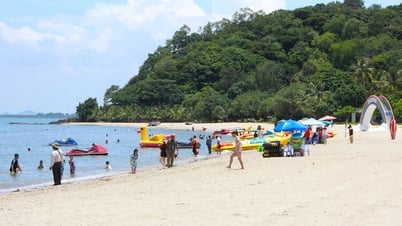

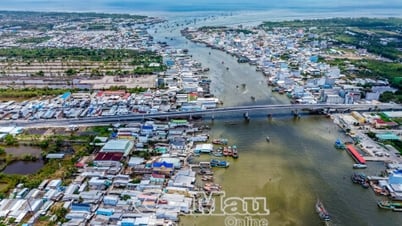





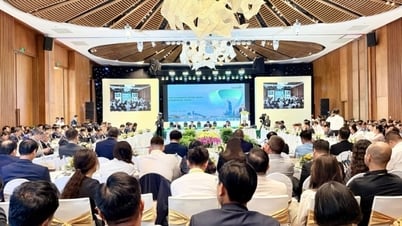

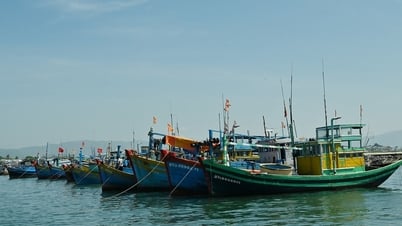



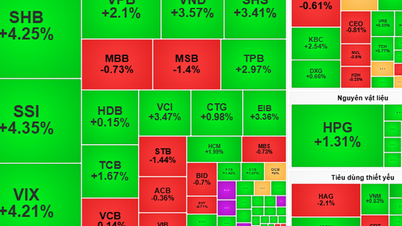
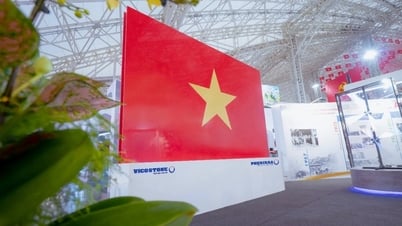














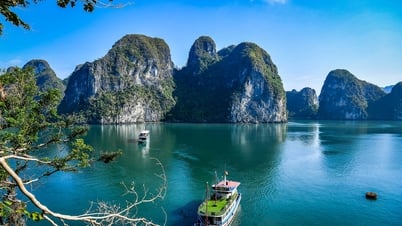

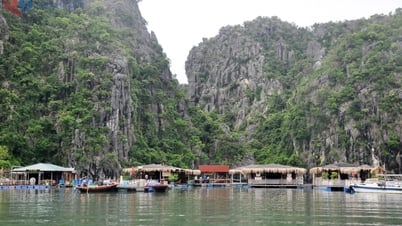

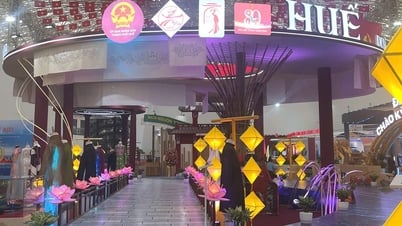


















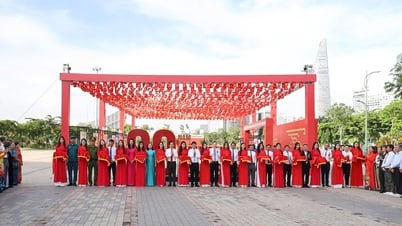







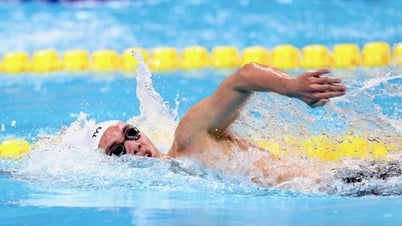








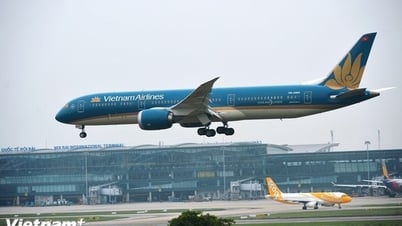

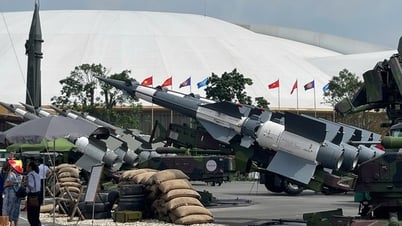


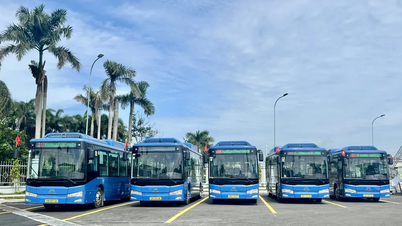
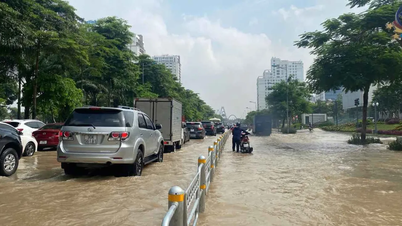


















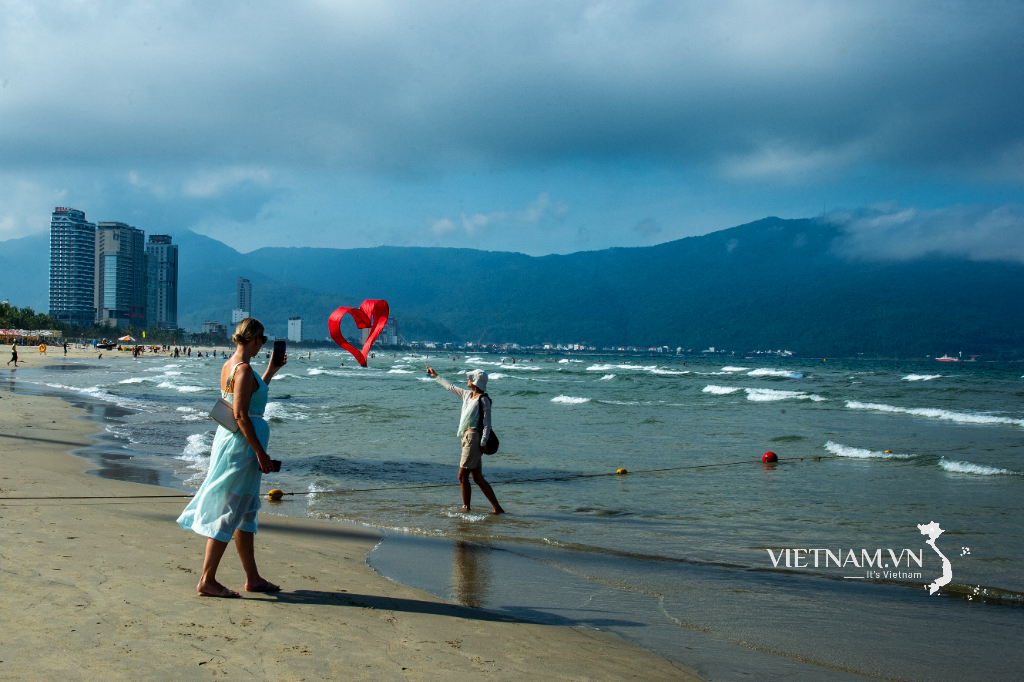
Comment (0)